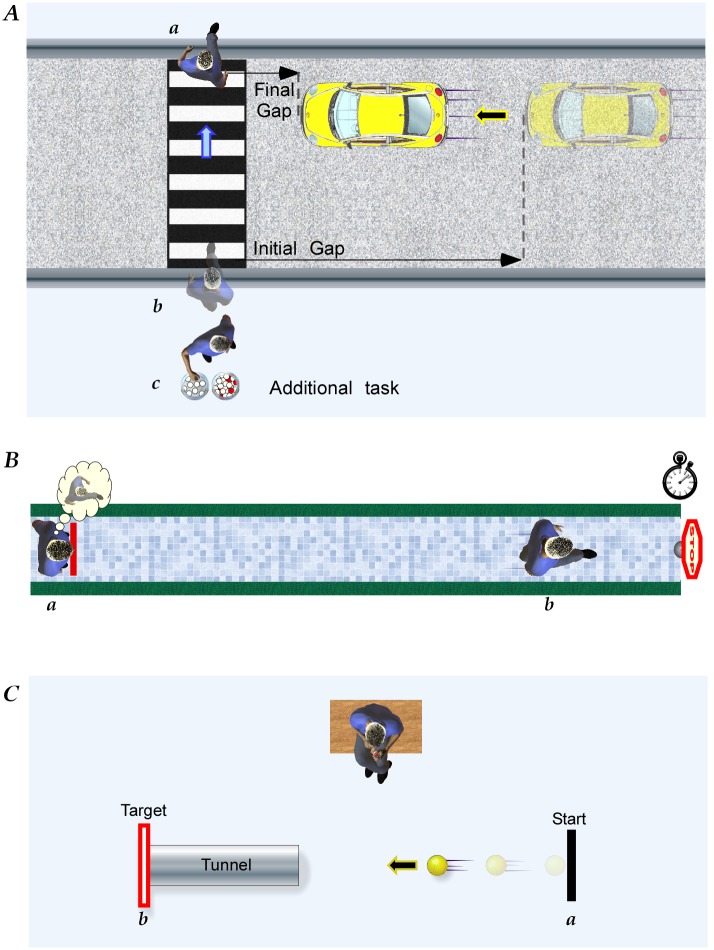Fig 1. Methods.
A. Study 1: Road Crossing. After crossing the road (a→b), participants waited, either at the road edge (free crossing) or performing the ball-gathering task (task crossing) at c. On the return, crossing in front of the oncoming car (b→a), the initial and final gaps to the car were measured. B. Study 2: Perceived time to walk to a target. Participants stood at the end of a 5m or 10m path (a) and imagined walking to the end, and indicated when they arrived. They then walked the paths (b) and the actual time taken was measured. C. Study 3: Perceived time-to-arrival of a moving object. Projected onto the floor was a virtual “ball” that left the start line (a) and moved towards a target (b) at constant speed. Before reaching the target it disappeared into a tunnel. Participants indicated with a finger press the time they estimated the ball would reach the target.

